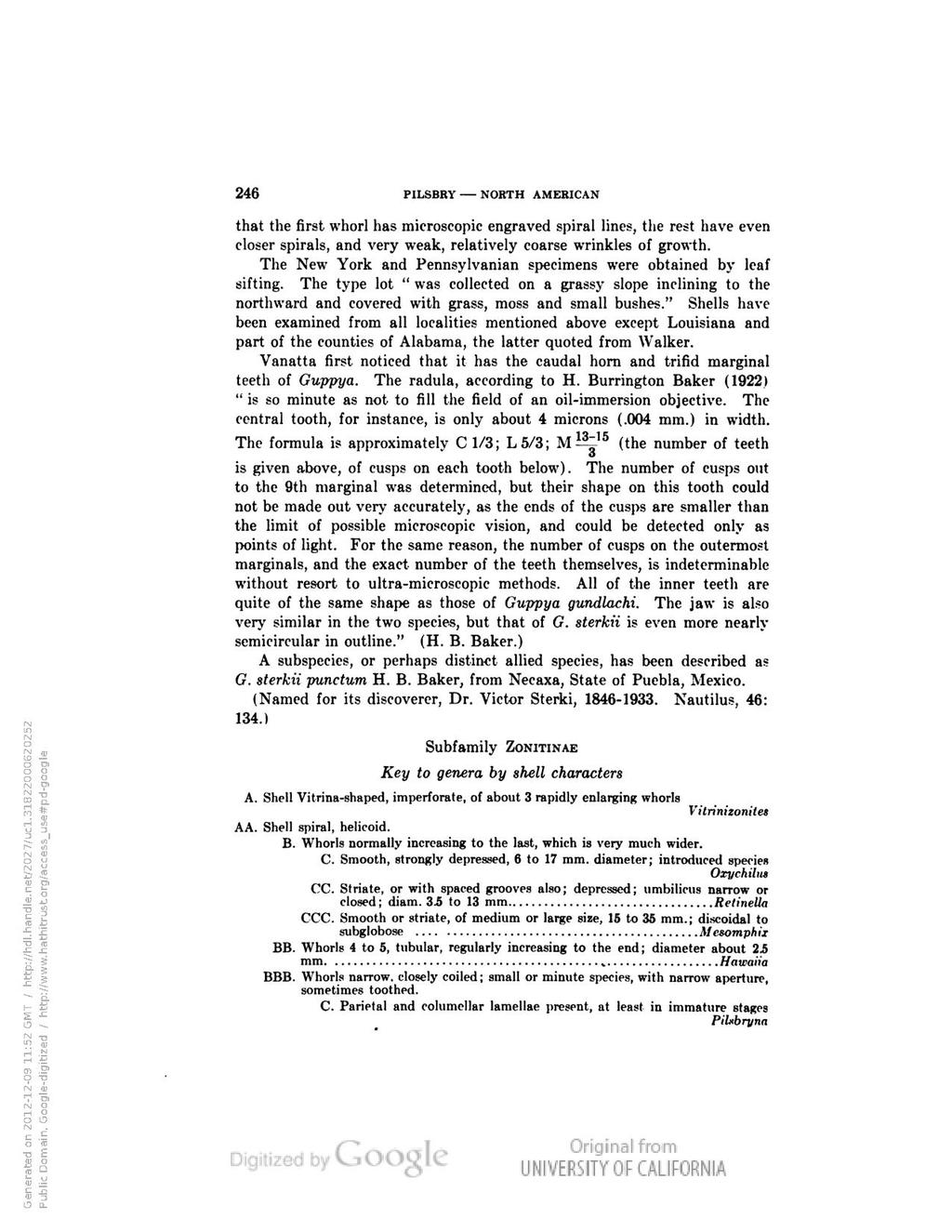that the first whorl has microscopic engraved spiral lines, the rest have even closer spirals, and very weak, relatively coarse wrinkles of growth.
The New York and Pennsylvanian specimens were obtained by leaf sifting. The type lot "was collected on a grassy slope inclining to the northward and covered with grass, moss and small bushes." Shells have been examined from all localities mentioned above except Louisiana and part of the counties of Alabama, the latter quoted from Walker.
Vanatta first noticed that it has the caudal horn and trifid marginal teeth of Guppya. The radula, according to H. Burrington Baker (1922) "is so minute as not to fill the field of an oil-immersion objective. The central tooth, for instance, is only about 4 microns (.004 mm.) in width. The formula is approximately C 1/3; L 5/3; M 13,~l0 (the number of teeth is given above, of cusps on each tooth below). The number of cusps out to the 9th marginal was determined, but their shape on this tooth could not be made out very accurately, as the ends of the cusps are smaller than the limit of possible microscopic vision, and could be detected only as points of light. For the same reason, the number of cusps on the outermost marginals, and the exact number of the teeth themselves, is indeterminable without resort to ultra-microscopic methods. All of the inner teeth are quite of the same shape as those of Guppya gundlachi. The jaw is also very similar in the two species, but that of G. sterkii is even more nearly semicircular in outline." (H. B. Baker.)
A subspecies, or perhaps distinct allied species, has been described as G. sterki punctum H. B. Baker, from Necaxa, State of Puebla, Mexico.
(Named for its discoverer, Dr. Victor Sterki, 1846-1933. Nautilus, 46: 134.)
Subfamily Zonitinae
Key to genera by shell characters
A. Shell Vitrina-shaped, imperforate, of about 3 rapidly enlarging whorls
Vitrinitionites
AA. Shell spiral, helicoid.
B. Whorls normally increasing to the last, which is very much wider.
C. Smooth, strongly depressed, 6 to 17 mm. diameter; introduced species
Oxychilus
CC. Striate, or with spaced grooves also; depressed; umbilicus narrow or
closed; diam. 3.5 to 13 mm Kdinclla
CCC. Smooth or striate, of medium or large size, 15 to 35 mm.; discoidal to
subglobose Mexomphix
BB. Whorls 4 to 5, tubular, regularly increasing to the end; diameter about 2.5
mm Hmraiia
BBB. Whorls narrow, closely coiled; small or minute species, with narrow aperture,
sometimes toothed.
C. Parietal and columellar lamellae present, at least in immature stages
Pilxbryna
